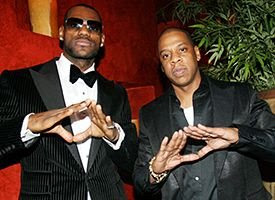 Published by http://www.probasketballnews.com/ on 24/12/2008
Published by http://www.probasketballnews.com/ on 24/12/2008link: http://www.probasketballnews.com/todd_122408.html
In beating the odds to claim the first pick in the 2008 NBA Draft, the Chicago Bulls landed their floor leader of the future in hometown hero Derrick Rose. But over the past 14 months one thing has become abundantly clear -- the team is seriously flawed. The Bulls are in desperate need of a legitimate inside presence who can score on the block. Without that, and as currently constructed, they’re going nowhere.
The entire roster, excluding Rose and Luol Deng, should be trade bait. Chicago has done a decent job of stockpiling talent, but the problem is the talent is too similar in skillset (or lack thereof). If the Bulls want to build a contender around Rose, they must commence the difficult process of overhauling the roster.
Let’s be honest, the Bulls have made some dreadful personnel decisions over the last few years, particularly in the draft. If they had retained LaMarcus Aldridge with the No. 2 pick in the 2006 draft, instead of trading him to the Blazers for Tyrus Thomas (pick No. 4), we would not be having this conversation. Aldridge is a flat-out stud and future All-Star power forward. The comparison of "Rasheed Wallace without the attitude" is spot on, which makes Aldridge a scary prospect. Thomas on the other hand is strictly an energy type player who is very raw offensively. In his third year, he is shaping up to be a major disappointment for a No. 4 pick.
In the 2007 draft, the Bulls again opted for a frontcourt energy guy, selecting Joakim Noah with the ninth pick. Problem is, he’s even worse than Thomas offensively and his defense is not as good as advertised. Unless it’s a dunk, Noah struggles to put the ball in the basket, even at close range. If this is your frontcourt tandem of the future (Noah and Thomas), good luck.
Spencer Hawes was selected by the Sacramento Kings immediately after Noah with the 10th pick in the draft. He clearly should have been grabbed by Chicago, as most mock drafts had predicted at the time. He is everything Noah isn’t -- skilled offensively both inside and out. He has also proven to be a pleasant surprise defensively, as well as on the boards.
So instead of a dynamic Hawes/Aldridge frontcourt, Chicago has ended up with a very average Noah/Thomas pairing. Considering their obvious and well-known limitations when drafted, that’s inexcusable.
The Bulls have also flunked in free agency and trades. The Ben Wallace acquisition needs no explaining. In trade, the Bulls had the necessary pieces to acquire either Kevin Garnett or Pau Gasol in 2006-07, but failed to do so. Either player would have solved their need for an inside presence. The trading away of Tyson Chandler for next-to-nothing is just another example.
The end result is a team that, apart from Rose, is a mess. Thomas and Noah are offensive liabilities. Kirk Hinrich is a very expensive backup guard. Ben Gordon has an overblown sense of his own abilities and has one foot out the door. Likewise, Larry Hughes is an average NBA player who is grossly overpaid. Drew Gooden doesn’t know his limitations and Andres Nocioni is a disappointment. While Deng is also struggling to justify his contract, he is a nice building block for the future alongside Rose.
What the Bulls must do is put together an attractive package of players that will bring a legitimate inside presence in return. The player they should target is Paul Millsap of the Utah Jazz, who is a restricted free agent at the end of the season. The Bulls could do one of the following to acquire his services: a) put together a package of players that will entice the Jazz to trade (i.e. any combination the Jazz desire), or b) slash payroll, so that the Bulls can offer Millsap a lucrative deal as a restricted free agent in the summer. This could be achieved by trading away Hinrich for an expiring contract, something that should be doable considering the need for point guards around the league.
With Utah focused on retaining Carlos Boozer this offseason, the Bulls could make Millsap an offer he can’t refuse, and for the Jazz, a luxury they can’t afford. Millsap is tremendously underrated, and would be a great cornerstone to pair with Rose and Deng. There is no doubt that Millsap is good enough to be a starting power forward in this league. In Boozer’s absence he has displayed a solid combination of toughness, defense, rebounding and inside scoring that is rare in today’s NBA.
A deal that Utah might be interested in could involve the following players -- Hinrich/Nocioni/Thomas for Kirilenko/Millsap/Harpring. The salaries match, the Jazz can rid themselves of Kirilenko’s bloated contract, while picking up some Jerry Sloan-type players in return (Hinrich/Nocioni). The Bulls would land and their man in Millsap and pick up a handy player in Kirilenko. I would take a Rose/Deng/Kirilenko/Millsap core over their current one any day. It would make for a gritty combination of players to contend with.
The problem that the Bulls will encounter going forward is that there aren’t many inside threats available. They will have to be very aggressive in seeking these players out. Suitable players who could be available for the right price are: Nick Collison and Chris Wilcox (Thunder), Nene (Nuggets), Brandon Bass (Maverickss), and rookies Darrell Arthur (Grizzlies) and Marreese Speights (Sixers). While neither of these players are likely to be All-Stars, they could all add a dimension to the team that is currently lacking.
One thing is certain: A team that exclusively relies on perimeter shooting will not succeed. The Bulls must deal with this issue now, and should be prepared to take a step back in the short term, in order to acquire the inside presence that will be critical for future success.









.jpg)


